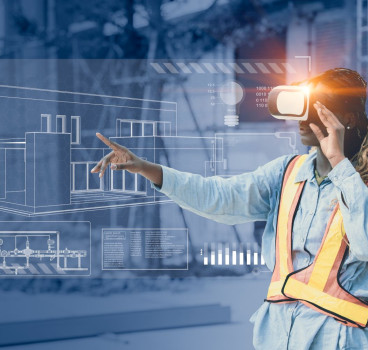Staying Safe on Construction Sites During Bad Weather
Construction sites are inherently accident-prone due to the physically demanding work and heavy machinery you need to operate. Adding bad weather, such as winter ice and snow, can make navigation even trickier. The same goes for other hazardous conditions like thunderstorms, hurricanes and tornadoes.
While you may be unable to control the weather, there are protocols that can improve worker safety on-site.
1. Find the Right PPE
Understand how different weather types can impact construction safety and operations to utilize the appropriate personal protective equipment (PPE). Winter brings frigid weather. Some areas are expected to experience record-low temperatures this year, possibly below 32°. The appropriate PPE would be thermal wear, like insulated gloves and boots.
2. Provide On-Site Shelters
It’s also important to have temporary shelters on construction sites. They can serve as safe zones when the weather starts getting worse or as rest areas where workers can take a break. For the winter, make sure you have heaters that can provide temporary warmth. Ensure that shelters are well-ventilated and placed away from flammable materials to avoid fires.
3. Develop Emergency Plans
Construction teams should form and communicate emergency plans. For example, most bad weather, like snow and rain, can make surfaces slippery, which poses danger on scaffolds, rooftops and other higher spots. It’s essential to have protocols in place for clearing the site or pausing operations to prioritize safety.
4. Add Site Coverings
With winter weather, you also have to be cautious about snow and ice buildup. Slick surfaces escalate fall risks, which should be mitigated since 300 to 400 construction workers fall to their deaths every year. Snowfall can also create additional weight on structures and compromise their stability. The number of workers and equipment may have to be adjusted to lessen risks. Erect coverings that can prevent snowfall from piling up.
5. Encourage Breaks
Bad weather can bring extreme cold or excessive heat. Both can impact the short-term health of your workers, which is why it’s essential to modify their schedules and insert frequent breaks. Encourage them to eat lunch and stay hydrated to avoid hunger and stress.
6. Monitor the Site and Weather
Weather conditions can change suddenly during a workday, which is why managers should stay informed through alerts and apps. You can also conduct surveillance to obtain real-time data on the current state of a construction site. Adjust work schedules and operations based on the forecasts.
7. Be Mindful of Equipment
Construction equipment can be temperamental as it is, so bad weather, such as freezing temperatures, can make it even more hazardous. Take precautions when handling this machinery. It’s a good idea to keep your fuel tanks 70% full to prevent moisture from condensing inside. Turn on your flashers and lights to increase visibility for any moving vehicles.
8. Hold Safety Briefings and Reports
Encourage a construction team culture where people can report safety incidents. You can also start a practice where the team gathers each morning to discuss what operations will be continued or paused for the day.
Prioritize Well-Being in Winter Weather
Bad weather is unpredictable in its severity and timeline. You should maintain a high level of vigilance at all times and implement effective safety protocols to ensure everyone on your team remains warm and secure.
Additional Blogs

Are architects losing their influence in the digital era?
For decades, architects have been the central creative force in construction, shaping the buildings we see and the way projects are conceived, communicated and delivered. Their role has been...
Read moreWhy the word “Innovation” has lost its meaning in construction
“Innovation” has become one of the most overused terms in construction. It appears in the dozens of press releases we receive each day, conference talks and project reports, often without any real...
Read more

Retrofit fatigue and are we asking too much of old buildings?
As the world pushes toward net-zero emissions, the pressure to decarbonise our built environment is more intense than ever. Governments, developers and building owners are investing heavily in energy...
Read more